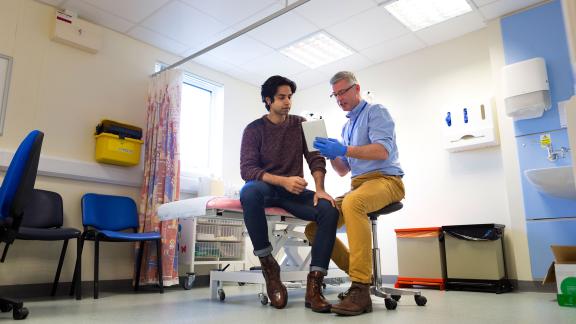Population health management: an introduction

This explainer offers an overview of population health management (PHM), answering key questions and highlighting the benefits of successful adoption. It is intended to provide an introduction for primary care teams looking to develop and strengthen PHM in local systems.
Understanding population health management
To tackle the current widening health inequalities in the UK and stagnating life expectancy, there is a need to consider all levers and drivers of health across our population, that is beyond the health sector. Our health is directly and indirectly influenced by the physical, economic and social contexts (wider determinants) in which we live, and this underpins population health as a concept. While definitions may overlap or vary, it is generally agreed that population health is an approach that aims to improve the health outcomes of an entire population.
Our health is directly and indirectly influenced by the physical, economic and social contexts in which we live, and this underpins population health as a concept
Population health management (PHM) is a methodology for understanding patient populations, their state of health (and some of the factors that may drive this) and supporting re-design of care for ‘at risk’ groups.
As a way of working, PHM drives the design and delivery of proactive, personalised healthcare models, which can help us to reduce health inequalities, make better use of resources, and sustain health and care services.
There should be a system-wide outcome focus, driven by need and not by existing services
A PHM approach uses qualitative and quantitative data and insights to identify local ‘at risk’ cohorts and create the evidence base for the targeted action needed. PHM means using data, evidence and knowledge in all forms to create local intelligence that aids decision-making.
There should be a system-wide outcome focus, driven by need and not by existing services. This could mean using a different approach and different skill sets, rather than following the way services have traditionally worked.
By enabling needs-based re-design, PHM can facilitate sustainable healthcare transformation by targeting interventions that prevent ill health, improve care and support for people with ongoing health conditions, and reduce inequalities in health outcomes. A PHM approach can lead to better outcomes, experience and value for patients while also offering wider operational improvements in health systems.
NHS England’s ‘4 Is’ approach
The foundations of PHM are its four core capabilities described below. The infographic below sets out key actions to take in building these capabilities, together with illustrative examples related to cardiovascular disease (CVD).
1. Infrastructure
The infrastructure is the set of basic building blocks that allow a system to manage the health of a population. This includes clearly defining the population, having effective leadership and agreement on information governance, and setting up basic digital and data infrastructure.
2. Intelligence
Once the right infrastructure is in place, we must understand population need and align this with effective interventions. The information gathered informs:
- which interventions are needed
- who within the population they will benefit
- how outcomes will be measured.
System partners will need to work together to identify and develop local analytical resource to deliver the intelligence function. This provides an important opportunity for system working to align analyst capacity and capabilities with primary care networks (PCNs) and across wider teams including voluntary, community, and social enterprise (VCSE) organisations, NHS trusts and public health.
3. Interventions
The next step is to build on the learnings of the intelligence to make decisions about the services that should be provided to your population. Care models should focus on proactive, anticipatory care and interventions to prevent illness, reduce the risk of hospitalisation and address inequalities. This might not need to comprise wholesale changes to your local service provision, but rather could involve adapting existing services and resources to ensure they are most relevant for the population.
4. Incentives
Developing a shared understanding of payment reform and its impact can support greater integration and transformed care. An agreed payment and incentives framework can help integrated care systems (ICSs) deliver their purposes; a population-based payment model aligns payments and incentives around the needs of the population rather than organisational boundaries.
Population health in practice
Further reading
The Population Health Management Academy hosted on FutureNHS [12] holds a wide range of useful resources and is available if you work in a system. Resources include webinars, case studies, delivery and discussion forums, regional materials and more detailed guidance on developing and assessing PHM locally.
This resource was developed as part of collaborative working agreement between
the NHS Confederation and Novartis Pharmaceuticals UK Ltd.
UK | MLR ID: 318244 | November 2023



